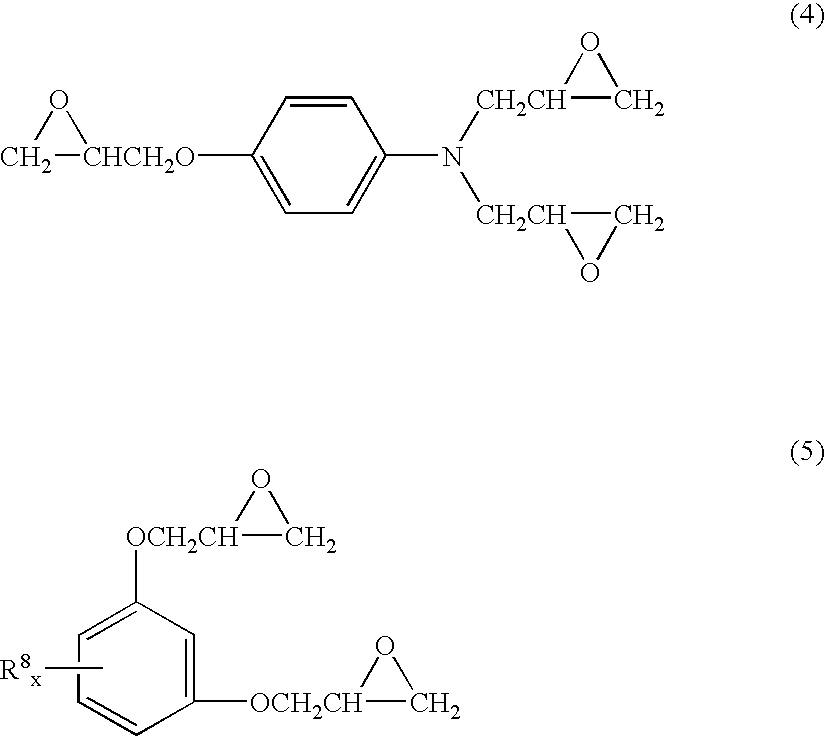Liquid epoxy resin composition and semiconductor device
a technology of epoxy resin and composition, applied in the directions of lifting devices, semiconductor/solid-state device details, transportation and packaging, etc., can solve the problems of reducing mechanical strength and thermal conductivity, cracking of packages, and wiring delays, so as to improve humidity resistance reliability and toughness.
- Summary
- Abstract
- Description
- Claims
- Application Information
AI Technical Summary
Benefits of technology
Problems solved by technology
Method used
Image
Examples
example
[0066] Examples of the invention and comparative examples are given below by way of illustration, and are not intended to limit the invention.
[0067] The resin compositions of Examples were examined by the following tests.
[0068] The viscosity at 25° C. was measured using a BH-type rotational viscometer at a rotational speed of 4 rpm. The viscosity at 25° C. was measured again after holding the composition at 40° C. for 24 hours.
[Void Test]
[0069] A polyimide-coated silicon chip of 5×5 mm having lead wires attached at a pitch of 50 μm was placed on a BT substrate of 30×30×2 mm to form a COB package. The resin composition was potted and cured to the package. Using a scanning acoustic microscope C-SAM (Hitachi Construction Machinery Co., Ltd.) and SEM, the sample was inspected for voids.
[Glass Transition Temperature (Tg)]
[0070] Using a sample of the cured composition measuring 5×5×15 mm, the glass transition temperature was measured with a thermomechanical analyzer at a...
PUM
| Property | Measurement | Unit |
|---|---|---|
| particle size | aaaaa | aaaaa |
| temperature | aaaaa | aaaaa |
| temperature | aaaaa | aaaaa |
Abstract
Description
Claims
Application Information
 Login to View More
Login to View More - R&D
- Intellectual Property
- Life Sciences
- Materials
- Tech Scout
- Unparalleled Data Quality
- Higher Quality Content
- 60% Fewer Hallucinations
Browse by: Latest US Patents, China's latest patents, Technical Efficacy Thesaurus, Application Domain, Technology Topic, Popular Technical Reports.
© 2025 PatSnap. All rights reserved.Legal|Privacy policy|Modern Slavery Act Transparency Statement|Sitemap|About US| Contact US: help@patsnap.com



